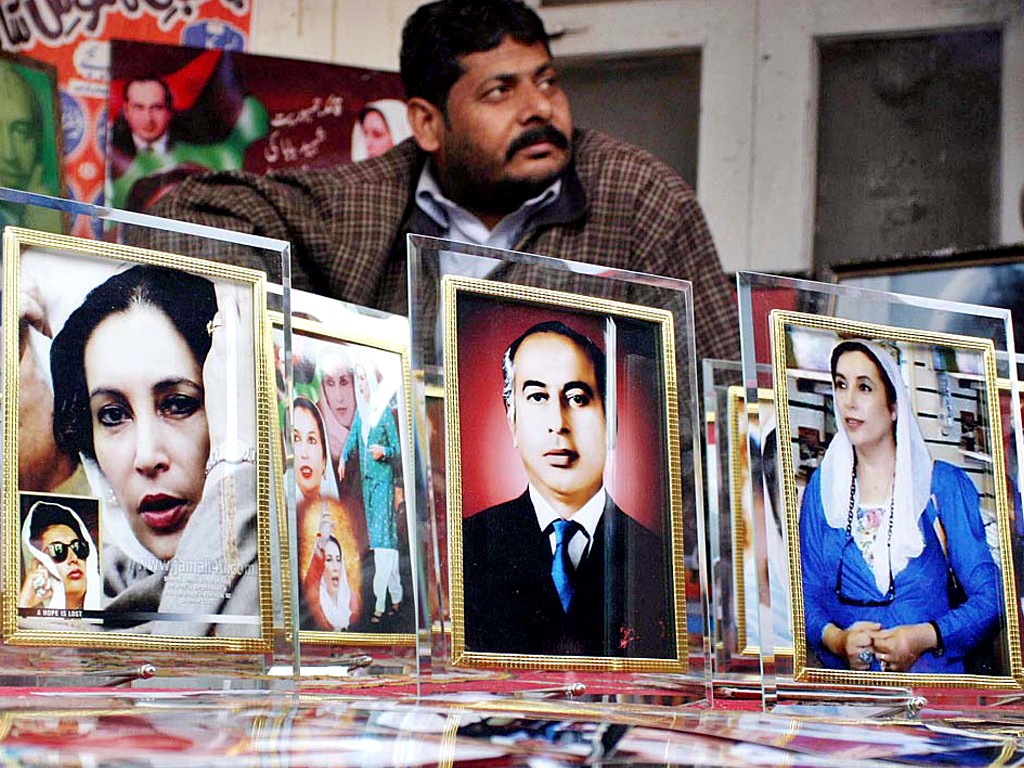
The new PPP leadership will have to capitalise on the youth’s potential as did its predecessors

On a mid December evening at a tea stall in Lyari, one of the poorest neighbourhoods in Karachi, a small group of Pakistan People’s Party members were discussing the party’s 50th anniversary held on December 6 in Islamabad.
The party has managed to show its strength in the capital mainly bringing its workers and supporters across the country, including Sindh. But in the streets of Lyari, the only stronghold of the party in Karachi, enthusiasm among its residents, especially youth, has waned since the assassination of the party’s chief, Benazir Bhutto, ten years ago.
"Although we -- from the old generation -- are also not satisfied with the policies of the party’s current leadership, we are tied with the party emotionally," says Ajmal Hussain, a PPP worker associated with the party for the past three decades. "The youth is not joining the PPP for many obvious reasons," he adds.
While the PPP workers, including Hussain, believe Benazir’s assassination left a political vacuum in the country and weakened her party, her demise has further widened gaps between the youth and the party, which relied on their traditional voters and ignored the emerging youth.
The wave of popular sympathy triggered by Benazir’s assassination strengthened the PPP in the 2008 general elections. The party vowed to fulfill the promises Benazir made on her arrival to Pakistan. But after forming the government, the party slumped into its worst crises ever, with poor organisation, bad governance and, most importantly, a lack of dynamic political leadership.
In 2013 general elections, cricketer-turned-politician, Imran Khan, exploited that vacuum. His party, Pakistan Tehreek-e-Insaf, and its aggressive campaign against corruption has taken the place of the PPP. It only happened when the PTI focused on the youth, pleading to break the old structure of politics and giving 35 per cent of its party tickets to under-35s.
On the ground, PPP leaders agree that the disengagement of youth in politics has affected the party in the country’s urban centers. Hussain says that party’s decision-makers are still talking about the sacrifices they offered during the dictatorship of Ziaul Haq and repeating old slogans of ‘roti, kapra aur makan,’ (bread, clothing and shelter). "But for the youth, these slogans have no substantial appeal. They have their own issues."
Hussain’s views are corroborated by a number of jobless youth who have been attracted by the PTI slogans. Muhammad Fazal, 25, could not get a job after graduating from a reputed engineering university in Karachi. "My family has been voting for the PPP but getting a job is impossible here without a strong political reference and money," Fazal tells TNS.
Realising the strength of youth in electoral politics, the PPP is re-organising the People’s Youth Organisation (PYO) and the People’s Students Federation (PSF), branding its young chairman Bilawal as a leader of the youth.
In its September meeting with the PYO Sindh leaders, Bilawal said the party has valuable plans for the youth in the party’s manifesto for 2018 general elections and will ensure strong representation of youth in the upcoming polls in the national and provincial assemblies.
Sartaj Khan, a Karachi-based political analyst, says because Asif Ali Zardari overshadows Bilawal, the latter has so far failed to carve out his own path. "Bilawal has failed to address issues that can attract the urban youth," Khan tells TNS.
Read also: Editorial
Riaz Sohail, a journalist, says when Benazir Bhutto entered politics she was young and leaders surrounded her were also young who were connected with party workers, the youth, and the masses. "Most members of Zia’s Majlis-e-Shura were old and traditional politicians and completely out of popular politics. But Benazir purposefully sidelined the party’s ‘uncles’, such as Ghulam Mustafa Jatoi, Mumtaz Bhutto, Abdul Hafeez Pirzada and Ghulam Mustafa Khar, and brought young leaders to the front."
People in Pakistan rally around the issue of corruption and development. "Imran Khan, for instance, has Khyber Pakhtunkhwa and Maryam Nawaz can talk about Punjab. But everybody knows about the Sindh government," says Khan.
"Unlike Imran and even Benazir, the central leaders of the PML-N have paid only lip service to the youth as an important section of voters. Both the parties continue to rely on the so-called electables whose politics rotates around tribal and ethnic appeals.